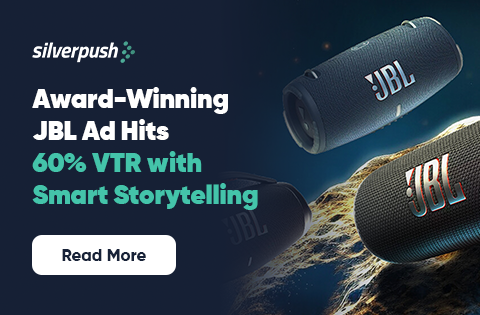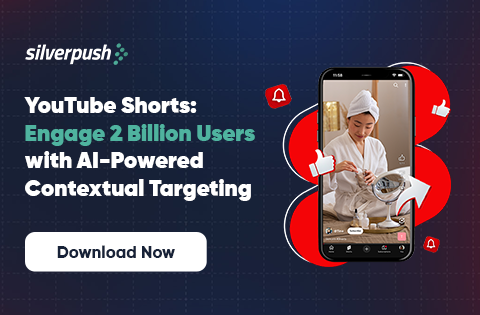Unlocking the Full Potential of Video Advertising with Mirrors’ Dynamic Video Optimization
PUBLISH DATE: 28 June 2023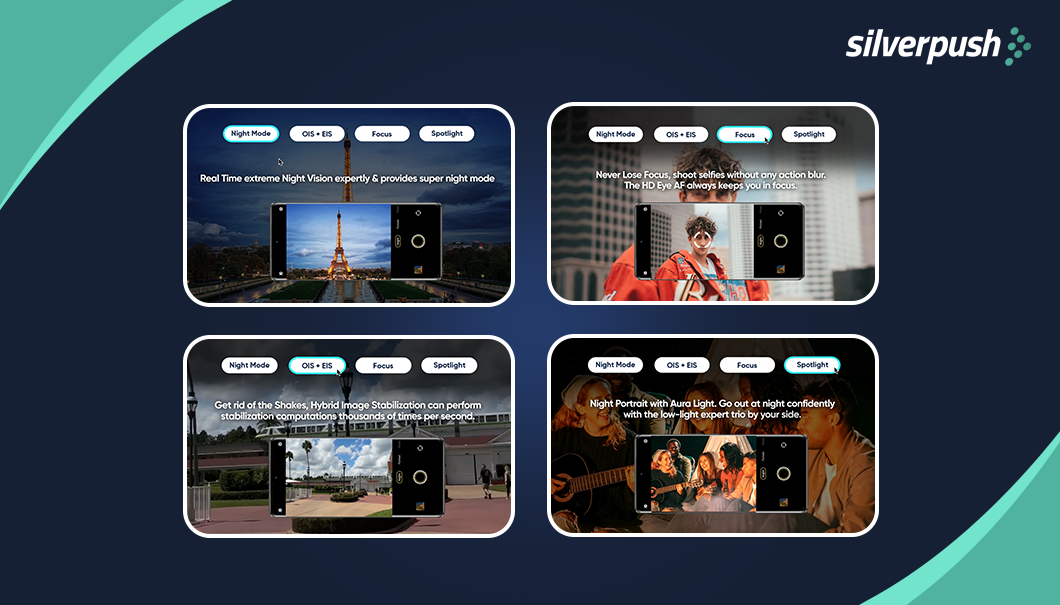
Crafters is here to transform traditional ads into highly advanced interactive ads with its cutting-edge dynamic video optimization.
With global ad spending expected to exceed $295 billion by 2026, video advertising has become an immensely popular method to connect with audiences online.
With over 2 billion active users worldwide, YouTube stands as the leading video advertising platform, hands down.
Unfortunately, engaging with users through video advertising on the open web is not as straightforward and convenient as it is with YouTube videos.
Read on to discover why video advertising on the open web is lagging behind and explore various methods that can help users unlock the full potential of video advertising across the web.
Factors Hindering Video Ad Promotion on the Open Web
Below are the reasons for hesitation in promoting video ads on the open web versus YouTube and other social media platforms:
1. Low Viewability
Video ads on the open web are often skipped or muted, resulting in low viewability rates. According to a study by IAB, the average viewability rate for video ads on the open web is only 58%. In contrast, the average viewability rate for video ads on YouTube is 95%.
2. Poor Targeting
Video ads on the open web lack precise targeting options because they rely on programmatic advertising based on website content and user browsing history which reduces advertiser control.
3. Lack of Engagement
Video ads on social media platforms are more engaging than those on the open web because they play uninterrupted.
Here are the top three reasons that have kept video advertising on the open web in the backseat. However, by modifying our advertising methods and incorporating advanced techniques such as dynamic video optimization, advertisers can witness significant improvements in their campaigns.
But, first, let’s understand DVO.
What is Dynamic Video Optimization?
Dynamic Video Optimization (DVO) is an innovative programmatic advertising approach that uses data-driven insights to create personalized video ads.
By analyzing user data, including interests, demographics, and browsing history, DVO enables advertisers to customize video content for each viewer.
Real-time analytics and contextual information are leveraged to tailor the ads based on the current context.
This personalized approach enhances the ad experience, increasing the likelihood of capturing viewers’ attention and driving conversions.
Consequently, DVO delivers relevant and engaging video content that resonates with individual viewers, maximizing the effectiveness of video advertising campaigns.
Why Should Advertisers Use Dynamic Video Optimization?

1. Advanced Targeting Capabilities
DVO offers advanced targeting capabilities, allowing advertisers to reach their desired audience with precision. Delivering video ads to the most relevant viewers increases the chances of engagement and conversions.
2. Enhanced User Experience
DVO enables advertisers to create immersive and interactive video ad experiences. By incorporating features such as shoppable touchpoints, users can seamlessly explore and purchase products or services directly from the video. This improves the user experience by eliminating the need for multiple clicks and streamlining the path to purchase.
3. Data-Driven Insights
DVO provides valuable data and insights that can inform advertisers’ future strategies. By tracking user interactions, engagement metrics, and conversion data, advertisers can gain a deeper understanding of their audience’s preferences and behaviors. These insights can then be used to optimize future video ad campaigns for better results.
4. Measurable Results
With DVO, advertisers have access to detailed analytics and performance metrics. This allows them to track the effectiveness of their video ads in real time, measure key performance indicators (KPIs), and make data-driven decisions to improve campaign performance. Advertisers can easily monitor CTRs, view rates, conversions, and other relevant metrics to evaluate the success of their advertising efforts.
5. Dynamic Storytelling
DVO enables advertisers to tell compelling stories through video ads. By leveraging dynamic content insertion and personalization techniques, advertisers can tailor their messages based on individual viewer characteristics, interests, or behaviors. This approach creates a more engaging and memorable experience for viewers, leading to higher brand recall and affinity.
6. Omnichannel Reach
DVO allows advertisers to reach their target audience across multiple platforms and devices. Whether it’s mobile, desktop, social media, or connected TVs, advertisers can deliver their video ads seamlessly across various channels, ensuring maximum reach and visibility.
Enhance Your Video Creatives with Silverpush’s Crafters
Crafters is Silverpush’s highly advanced dynamic video optimization technology. It is a solution for creating and delivering personalized video ads to users based on a variety of data sources.

We all know Videos are the most engaging Ad Format. But by infusing AI and unique Interactivity features, Crafters can help brands in leveraging Video Ads on the Open Web, like never before!
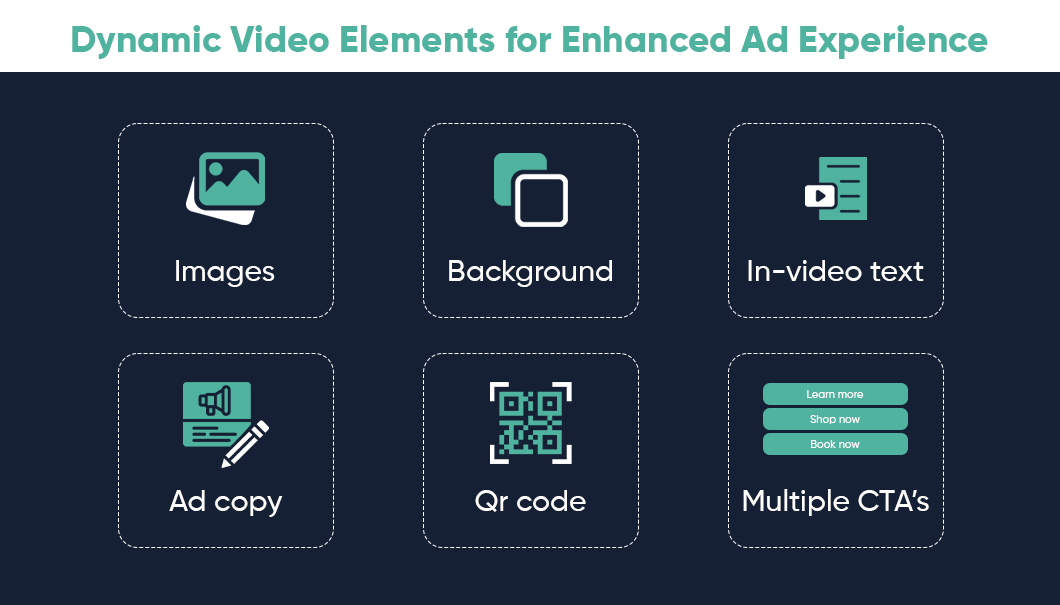
Crafters will help you improve the performance of video advertising campaigns by adding a layer of contextual creativity that will drive better business outcomes.
Here are some additional tips for using DVO effectively:
1. Use the Right Data
The data you use to create your DVO campaigns is critical to their success. Make sure you’re using high-quality data that is relevant to your target audience.
2. Test Different Variations
Once you’ve created your DVO campaigns, test different variations to see what works best for your audience. This will help you optimize your campaigns for maximum results.
3. Track your Results
It’s important to track the results of your DVO campaigns so you can see what’s working and what’s not. This will help you make adjustments to your campaigns to improve your results.
Importance of Crafters: Elevate your Performance and Engagement on Video Ads
1. Advertisers
Our next-gen video optimization technology solves the problem of ads being ignored by audiences. By incorporating an interactive feature into traditional video ads, it has the potential to generate users’ curiosity and encourage them to engage with the ad. This leads to improved performance metrics such as click-through rates, lead generation, and video view-through rates.
2. Users
Users will not only view the video ad but will have various formats to interact with the ad as per their interest, ad type, and various options to redirect to the desired page.
Conclusion
With the advertising world growing at a fast rate, it’s important to keep pace. Traditional video ads fail to engage users or boost user engagement. That’s why Silverpush has developed an advanced solution delivering a staggering 2X increase in Click-Through Rates (CTRs) and an impressive uplift of nearly 60% in Video Completion Rates (VTRs) solving the problems of video advertising on the open web. Take a step towards boosting your ad performance and capturing audience attention by filling out the form on the right. Our team of experts will be in touch with you shortly to provide more insights into our groundbreaking technology.
How to Create Relevant Contextual Ads with Mirrors Generative AI
PUBLISH DATE: 15 June 2023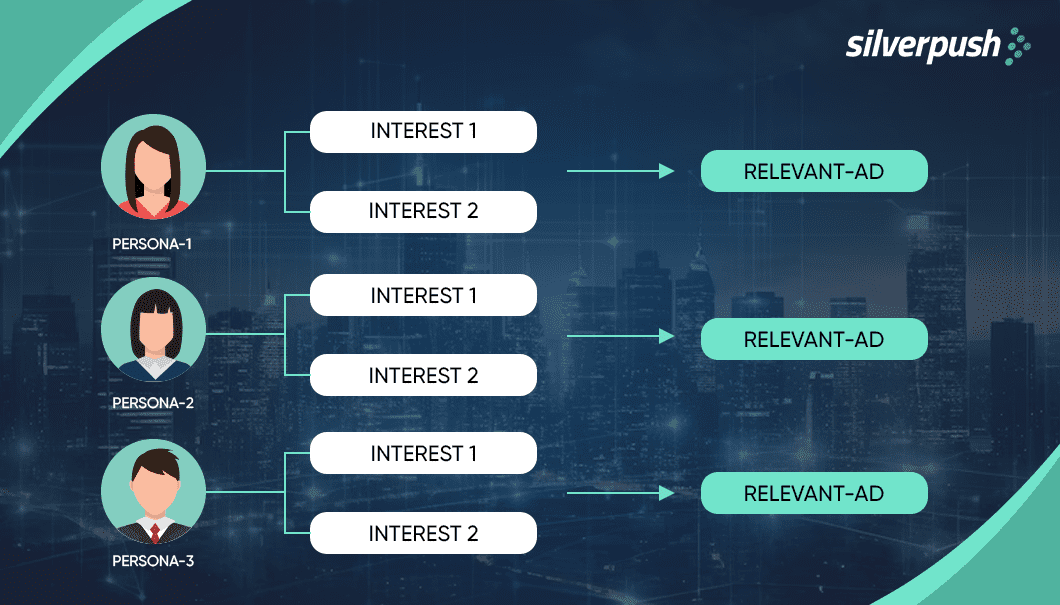
Let’s face the truth: THIRD-PARTY COOKIES ARE LONG GONE!
Advertisers need to drastically shift from conventional targeting methods (requiring audience data) to privacy-focused strategies without compromising on delivering relevant ads.
Traditional targeting methods relied on cookies to reach targeted audiences by building a detailed profile of their online activity.
Growing data privacy concerns and the implementation of regulations like CCPA and GDPR raise the dilemma – how to balance between delivering personalized and relevant ads while respecting user privacy?
Enters Mirrors Generative AI, the next-gen contextual planning tool capable of discovering audiences without cookies and reaching them precisely in contextually relevant moments. The highly advanced tool was recently launched by Silverpush at its Cannes Lions 2023 debut.
Amplifying Relevance and Reach with Generative AI-Powered Contextual Advertising
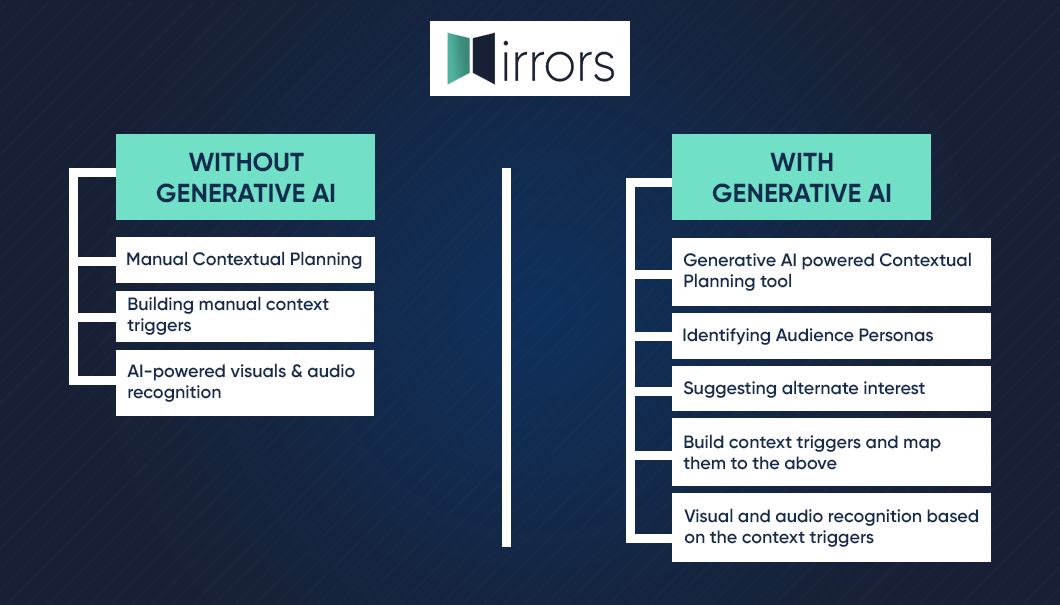
Mirrors, the flagship product of Silverpush, has recently integrated Generative AI into its contextual advertising technology to help brands reconnect with their untapped audiences.
It is a revolution that will boost the ever-present contextual intelligence by discovering newer audience personas without any human bias, guesswork, or stereotypes of the past.
By leveraging its predictive AI technology, Mirrors goes beyond the basics and delves deep into the content consumption habits of the target audience.
Utilizing advanced generative AI technology, Mirrors carefully analyzes videos and identifies key contexts in webpages, surveys, and a wide range of content on the open web, examining each word with precision.
This enables Mirrors to uncover patterns, decipher meaning, and extract valuable insights that surpass surface-level understanding.
Challenges Faced by Advertisers in Finding Contexts Manually
To maximize engagement, advertisers aim to target diverse audience personas based on their specific interests, timing, and context. However, relying on manual context-building methods has certain limitations.
1. Scale and Complexity: Manually creating context triggers for a large volume of content can be a time-consuming and complex task. Advertisers may struggle to keep up with the constantly evolving content landscape and the need to identify and update relevant triggers across various platforms and channels.
2. Subjectivity and Bias: Manual context trigger creation involves human judgment, which can introduce subjectivity and bias. Advertisers may have different interpretations of content, resulting in inconsistent or inaccurate context triggers that may not align with the intended audience or message.
3. Limited Contextual Understanding: Fully comprehending the context of every piece of content manually can be challenging. Advertisers may miss subtle nuances, references, or trends that could impact the appropriateness of ad placement.
4. Resource Intensity: Creating and managing manual context triggers requires dedicated resources, including skilled personnel, time, and effort. Advertisers may face limitations in terms of available resources, hindering their ability to effectively build and maintain comprehensive sets of context triggers.
5. Timeliness and Real-time Updates: Content evolves rapidly, and new trends and topics emerge regularly. Advertisers may struggle to keep their manual context triggers up to date, leading to potential misalignment between ads and current content relevance.
6. Scalability and Adaptability: As advertising campaigns scale and expand across different platforms and channels, managing manual context triggers becomes more challenging. Advertisers may find it difficult to adapt their triggers to new formats, channels, or emerging content types.
Eliminating Human Bias and Automating Context Discovery
The real power of Mirrors Generative AI lies in its ability to seamlessly integrate AI as a co-pilot to human intelligence. The advanced technology builds a comprehensive context list, well aligned with the audience’s personas and their direct and alternate interests. This enables advertisers to reach untapped/overlooked yet relevant audiences, resulting in enhancing incremental reach.
Why Plan Your Next Campaign With Mirrors Generative AI?
1. Cookieless Audience Discovery: The contextual planning tool will enable advertisers to identify contextually relevant audiences without relying on third-party cookies.
2. Scale without Compromise: Better contextual relevance leads to improved audience understanding, which can often be overlooked. By tapping into these overlooked audiences, advertisers can enhance their reach and engagement.
3. Understand Multicultural Audience: Mirrors Generative AI uses diverse datasets to assess performance across races and cultures. Then, analyzing metrics and understanding the emotional impact, bias, inclusion, and purchasing intent. This generates audience personas and passion points, offering advertisers valuable insights for informed decision-making.
4. Create Highly Customized Campaigns: Utilizing Mirrors Generative AI offers the opportunity to go beyond pre-defined taxonomies and gain unparalleled flexibility in creating highly customized campaigns.
Ready to Experience 3X Audience Expansion with Mirrors Generative AI?
It’s your time to broaden your audience reach with Mirrors Generative. To know how our advanced tool can boost your ROI fill and widen your reach with precision out the form on the right.
Finding Balance: Contextual Advertising and User Privacy in Open Web
PUBLISH DATE: 07 June 2023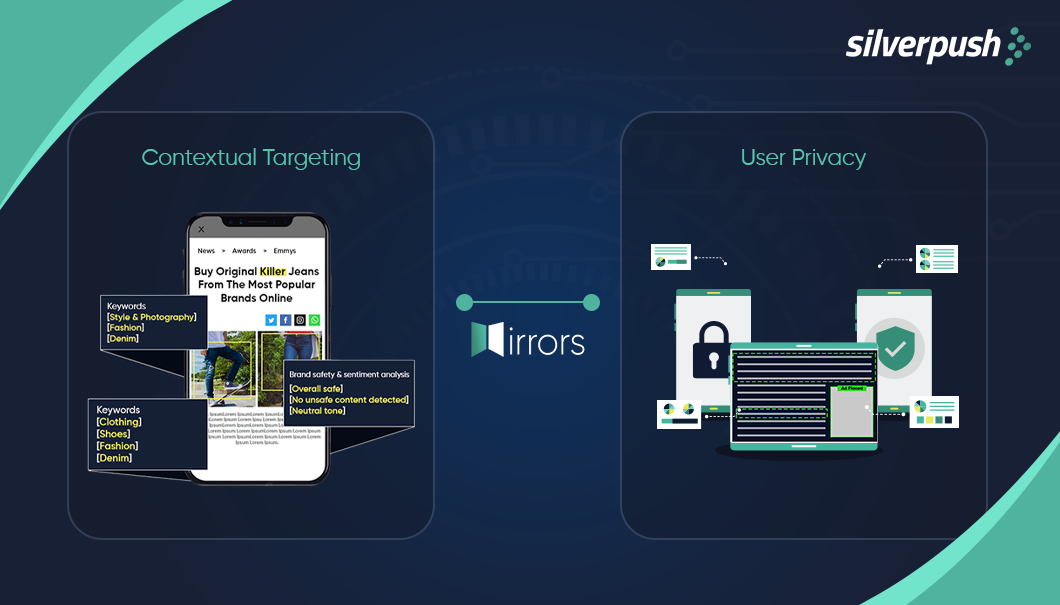
Advertising is a crucial element for any brand as it drives its revenue by pursuing customers from the beginning of the funnel, that is, brand awareness to conversion. Along with customer acquisition, it also generates strong brand awareness and builds a brand image.
The advertising landscape today is facing the issue of users’ online privacy which has become an alarming concern for brands. It is moving towards privacy-first advertising.
“66% of consumers have expressed discomfort with businesses and brands tracking their browsing history to deliver personalized ads.”
This statistic highlights a growing unease among internet users regarding the use of their data for targeted advertising purposes. As a result, businesses and advertisers are increasingly seeking alternative strategies that respect user privacy while still delivering relevant and engaging advertisements. In this context, finding a balance between personalized advertising and privacy has become crucial for brands to maintain consumer trust and loyalty.
Mirrors is a contextual advertising solution for the open web by Silverpush which is helping brands tap into the audience while abiding by the privacy guidelines set by General Data Protection Regulation (GDPR) and California Consumer Privacy Act (CCPA).
How can Mirrors be a Game Changer in a Privacy-First Environment?
More and more internet users worldwide are expressing increased concern about their online privacy, with 67% of the population is stating that they are more concerned than ever. A study found that 81% of people prefer to see ads that are relevant to their browsing experience, and 65% of consumers have a more positive opinion of brands that offer contextually relevant ads.
And, with this, brands need to be more concerned about their advertising strategies to navigate this shift in consumer mindset.
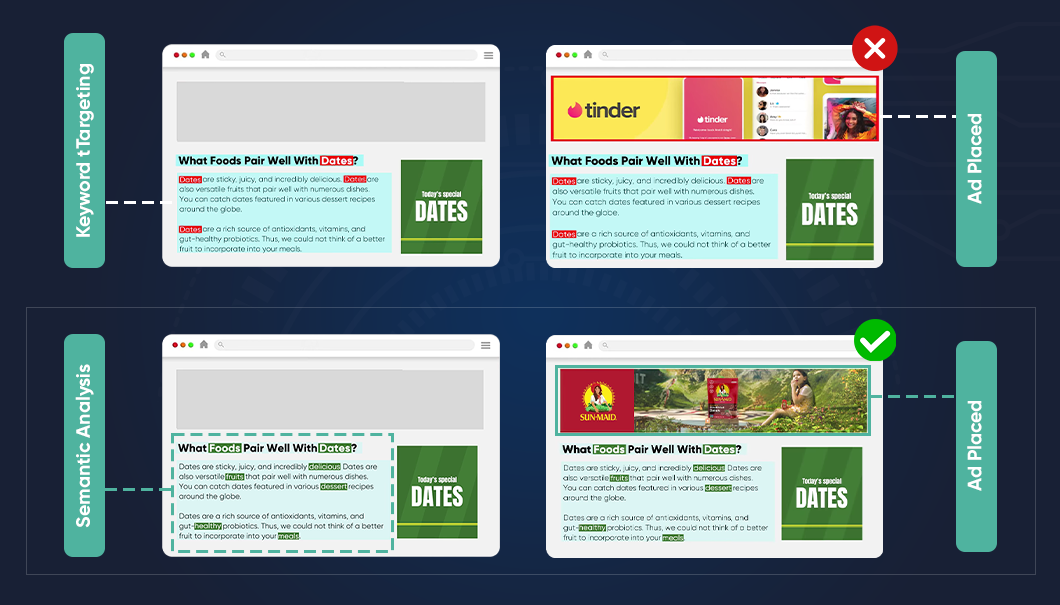
To address these concerns and preferences, contextual advertising has emerged as an effective solution. The AI-powered technology analyzes the content of the webpage and deploys the most relevant ad based on contextual triggers. These triggers include identifying key contexts of the entire content. With this approach, advertisers ensure that the user is targeted with the most relevant ad.
Contextual ad targeting also benefits advertisers by providing a higher number of relevant ads to consumers. Since the ads are displayed based on the content of the page, they are more likely to align with users’ interests and increase engagement.
For example, if a user is looking for the latest laptop, the AI will target the user with the most relevant ad that will be related to the content of the webpage.
Another benefit is that, unlike other targeting methods, contextual advertising doesn’t rely on collecting or storing personal data about users, alleviating privacy concerns. This form of targeting offers a privacy-friendly approach that aligns with users’ increasing concerns about data usage. It delivers relevant ads based on webpage content, enhancing user experience and generating more positive perceptions of brands.
But why has contextual advertising been a widely accepted approach?
Contextual advertising has been a widely accepted approach because in the changing landscape of advertising it aligns the best with the requirements of users and advertisers.
Today, users expect privacy assurance more than a personalized ad experience. They want their identity and information to be safe as they browse the web.
Keeping the rising concerns in mind, major browsers like Firefox, Safari (Apple), and Opera banned third-party cookies from use and Google Chrome began working on the alternative.

Third-party cookies have historically played a significant role in behavioral targeting. Here’s an overview of their role:
1. Collecting User Data: Third-party cookies are small text files that are stored on a user’s browser by a website other than the one they are currently visiting. These cookies allow third-party advertising networks or tracking companies to collect data about a user’s browsing behavior, such as the websites they visit, the pages they view, and the products they are interested in. This data is crucial for behavioral targeting.
2. Profiling and Segmentation: With the help of third-party cookies, advertisers were able to create user profiles and segment audiences based on their browsing habits and interests. By tracking users across multiple websites, third-party cookies gathered a wealth of information that helped advertisers understand individual preferences and tailor their advertising messages accordingly.
3. Personalized Advertisements: Advertisers use the information provided by the third party to serve relevant ads based on a user’s browsing history and interests.
4. Retargeting: Third-party cookies enable retargeting, where ads are shown to users who have previously interacted with a brand or visited a specific website, thereby increasing the chances of conversion.
5. Measurement and Analytics: Advertisers could monitor click-through rates, conversions, and other key performance indicators by leveraging the data stored in these cookies. This information helps advertisers optimize their campaigns, refine their targeting strategies, and make data-driven decisions.
These factors increased concerns about privacy among users which lead to drastic changes in the advertising. Hence, contextual targeting has become a useful alternative to survive in this dynamic advertising landscape.
Conclusion
The advertising landscape will continue to evolve, advertisers must find a solution that caters to the privacy concerns of the user without diverting from personalized messaging. Advertisers are rapidly inclining towards the contextual targeting approach. This is because it is the only and best available option to gain a competitive edge. This approach not only ensures safety but also drives better results and Return on Ad Spend (ROAS).
FMCG Industry Advertising Future: Capitalise the Power of Relevancy
PUBLISH DATE: 26 May 2023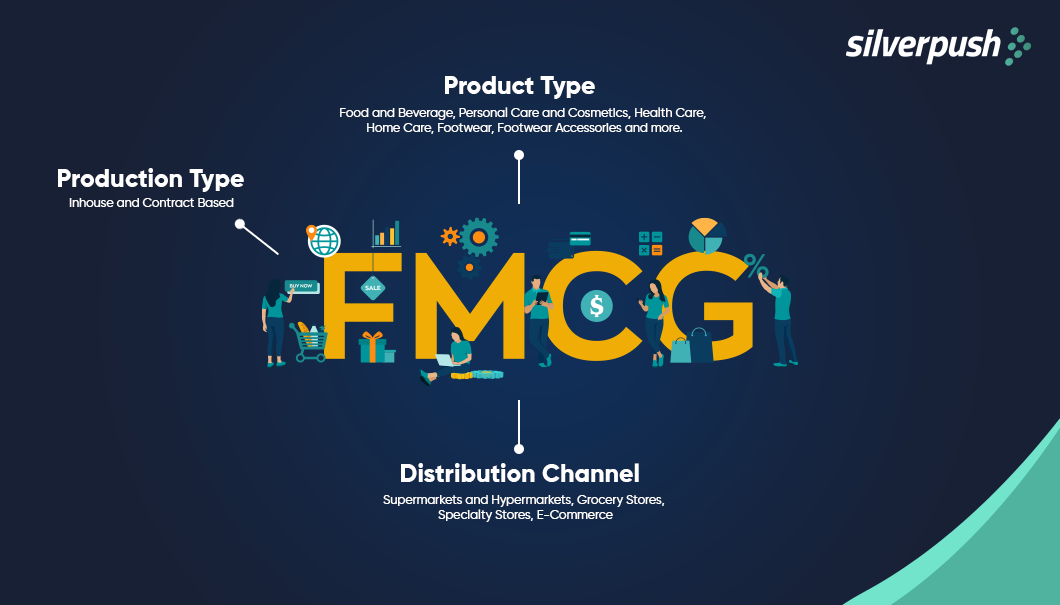
The FMCG industry is a vital component of the global economy, contributing significantly to a country’s Gross Domestic Product (GDP) and job creation. As a major driver of consumer spending, FMCG plays an essential role in various aspects of the economy.
The FMCG market size was evaluated to be 716.3 Billion in 2022 and the CAGR growth rate is expected to be 4.41% from 2023 to 2028.
The market size of the FMCG industry has significantly grown in the U.S., China, and other developed markets. Keeping the growth in mind, the experts are predicting 70% growth on a global scale. The World Bank predicts that in terms of consumer market the FMCG market in India will take the third place surpassing Japan and Germany by 2030.
The consumer industry is a highly competitive landscape, with brands vying for market share based on product type, production techniques, and distribution channels. However, in this fiercely contested arena, advertising is the key to success for them. But the advertisers are facing a set of challenges in the advertising landscape.
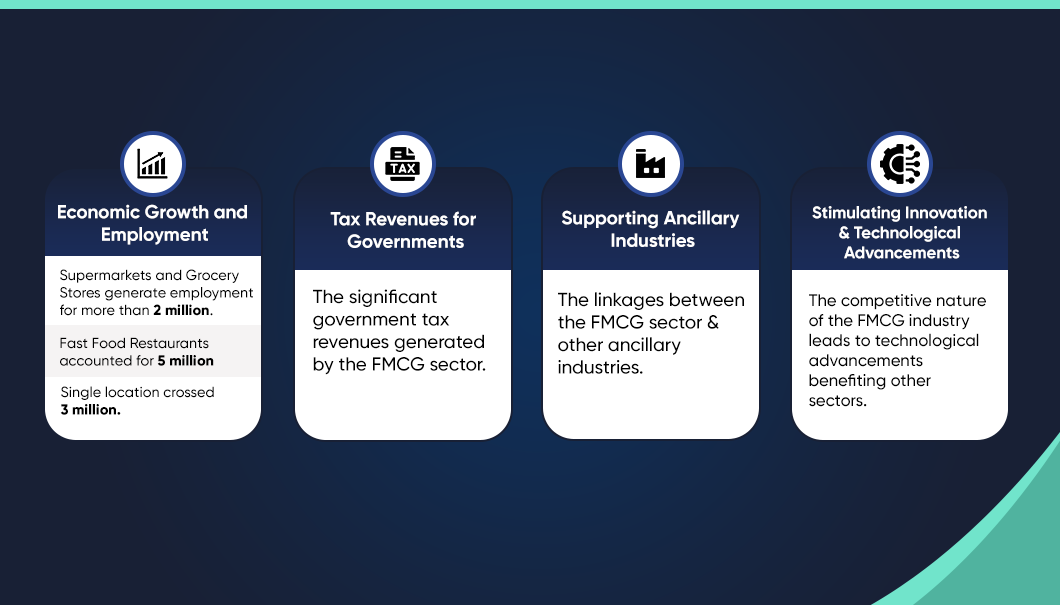
What are the Advertising Challenges Faced by the FMCG Industry?
According to a study, till 2023, FMCG firms were expected to raise their digital advertising spending by 7% yearly. FMCG expenditure decreased by 10.7% to $ 26.7 billion in 2020, a more significant decrease than the whole advertising industry.
But utilizing the ad spend is a bigger and more important factor. Since the FMCG industry is flooded with brands and products, getting brand visibility and brand recognition are the two main purposes of advertising for them. To achieve both goals choosing an appropriate advertising approach is crucial. But due to a shift in consumer behavior creating a positive and solid brand image has become difficult.
The consumer has become more empowered and they want to control everything they see, especially in the virtual space. They want to see the ads of their interest but without getting digitally stalked. 72% of people believe that virtually all of what they do online is being monitored by advertising, technology corporations, or other businesses, and 81% believe that the threats can surpass the possible rewards of data collecting.
Not only the audience but the traditional advertising ways have often led brands to face consequences of negative branding due to wrong ad placement. This not only damaged their reputation but also resulted in ad wastage.
The Rise of Contextual Advertising
Have you ever noticed that whenever you walk into a supermarket to get one item from the shelf you end up filling the cart? This is because at that moment you were interested in the items, they were relevant and you were triggered to buy them.
Contextual advertising is similar!
Through contextual targeting, advertisers reach the target audience at the right moment which triggers them to engage with the brand. According to a study, 79% of respondents agreed that they were comfortable with the ads that are relevant to them. Also, 65% said they would be more tempted to buy from relevant ads.
How can the FMCG Industry Benefit from Contextual Ads?
One approach to take advantage of the opportunity is through omnichannel contextual advertising. Silverpush’s remarkable AI-powered solution, Mirrors, ensures brand safety and suitability across various advertising channels. The high-powered AI technology ensures the message reaches the right audience.
1. YouTube
For the FMCG industry, video advertising is the most suitable ad format. YouTube offers various ad formats and advertisers can choose the most suitable format for them. According to a study, 88% of video marketers were satisfied with the ROI of their video marketing on social media.
In the past, an FMCG brand chose 1 video creative to connect and interact with the target audience. The campaign has delivered more than 9 million impressions in 28 days.
Post-campaign analysis the brand concluded that they had reached more than 5 million unique users. The campaign performed beyond the industry benchmarks as it surpassed the planned KPIs (VTR).
2. Open Web
Relevant advertising can be shown depending on the webpage content that the target audience has viewed. The mirror captures the audience’s attention, without invading the user’s privacy. This gives users a sense of safety and the advanced AI-powered technology ensures that the ad is placed in a brand-safe environment.
3. Meta
To extract contextual signals that enable the distribution of real-time, in-the-moment advertising for outstanding results, Mirrors carefully selects and examines brand-safe Facebook pages. Models for Artificial Intelligence (AI), Machine Learning (ML), and Natural Language Processing (NLP) are used to do this.
4. CTV
On most streaming TV services, CTV represents over 80% of all viewing. The remaining 20% is accounted for the other devices connected to the internet (laptops, smartphones, and tablets).
As per studies, ad spending on linear and connected TV (CTV) combined will increase from $87.24 billion to more than $100 billion in 2026. This will be due to the surge in CTV viewing.
When marketers purchase advertising space on CTV, their commercials are played to viewers when they stream movies, TV series, and other content to their linked television. To ensure brand safety, ads are delivered in the proper context with the help of semantic analysis, content analysis, and customized ad segments.
Takeaways
The advertising arena is changing rapidly and for the FMCG industry, it is their primary source of establishing brand recall. Contextual advertising can be a game-changer for them as it will help them in capitalizing on the interest of the user. It will help drive engagement without intervening with the privacy of the user. Also, omnichannel advertising can play a significant role in strengthening brand recognition.
The Power of Multicultural Advertising: Reaching Diverse Audiences
PUBLISH DATE: 24 May 2023
USA minority groups buying power is expected to rise from 4.2 trillion in 2020 to 7 trillion by 2025. With this significant growth, brands cannot afford to overlook the importance of targeting multicultural communities in their advertising strategies.
In this blog, we will explore why brands should focus on diversity, how they can effectively reach multicultural communities, and the benefits of doing so.
Why is Multicultural Advertising Important?
Brands aspire to capture the hearts of millions and establish a lasting brand recall as their primary objective. Yet they miss out on a larger portion of the audience.
Multiculturalism has played a significant role in this endeavor, showcasing its positive impact on our daily lives. This can be observed through the fusion of diverse cultures in ethnic enclaves found in metropolitan areas and the availability of various ethnic cuisines in supermarkets. One of the driving forces behind the market expansion in the past decade has been the multicultural consumer market, currently valued at over $5 trillion.
The corporate expansion serves as a pivotal factor in this growth, benefiting all brands. As markets expand, more consumers enter the fray, leading to increased consumption and fostering innovation by introducing new products. This, in turn, promotes higher usage and the potential for premium pricing. When executed effectively, this generates greater revenue and income, consequently enhancing purchasing power.
A renowned brand from the FMCG industry had a boost in sales in North America. Interestingly, a larger portion of their sales was accounted for by diverse communities of the region.
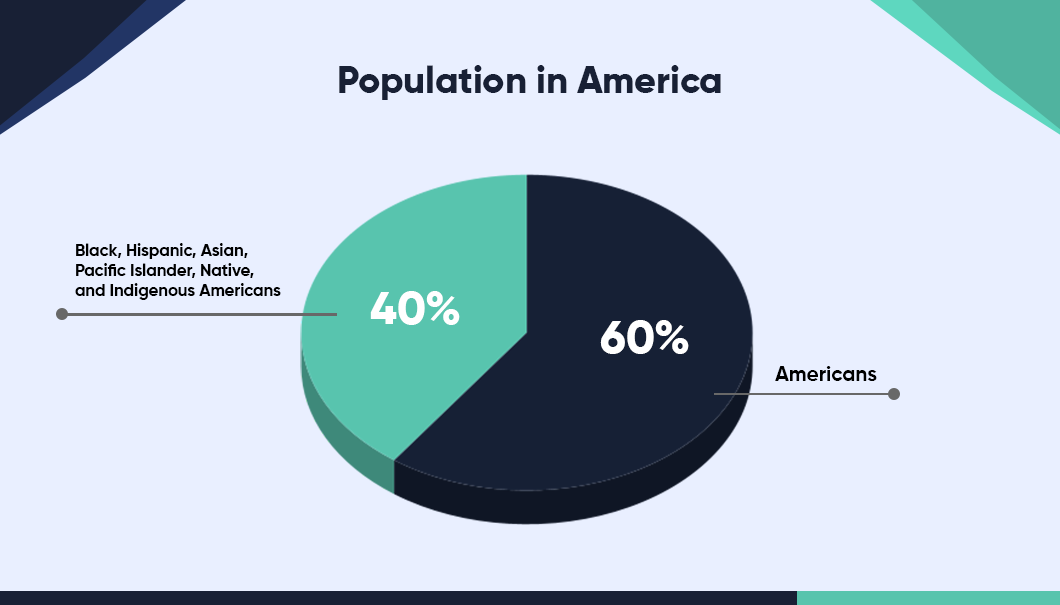
What is Multicultural Advertising?
Immigration encompasses more than mere physical mobility; it represents the dynamic exchange and interplay of diverse cultures. Each individual carries the bedrock of their identity, fostering the emergence of vibrant and multicultural communities.
Expanding Horizons: Beyond the LGBTQ+ Community
While many advertisers focus solely on the LGBTQ+ community when it comes to multicultural advertising, it’s essential to remember that diversity encompasses various ethnic groups. In the United States, Black, Hispanic, Asian, Pacific Islander, Native, and Indigenous Americans makeup 40% of the population. It is crucial for brands to recognize and target the entire multicultural communities to maximize their reach and impact.
How can Brands Reach Multicultural Communities?
The advertising arena is under evolution. The phase-out of third-party cookies has inclined advertisers towards contextual advertising. Since cross-culture targeting poses a set of challenges that are hard to overcome with conventional targeting methods, contextual targeting methods can be beneficial.
Some of the challenges are:
1. Cultural Sensitivity: Multicultural communities are sensitive towards their presence. Brands must understand their diverse cultural nuances and sensitivities. They must ensure that their message resonates with the viewer.
2. Language Barrier: Brands need to ensure that their message is tailored well according to the specific group they are targeting. Understanding the intricacies of each culture is crucial for creating effective campaigns that resonate with the target audience.
3. Limited Reach and Targeting: Traditional advertising channels often need to be improved when it comes to reaching specific multicultural audiences. Targeting these communities through one or more channels can be complex as they may cause hindrances in targeting methods.
To overcome these challenges, advertisers can leverage Silverpush’s advanced AI technology, Mirrors. This offers enhanced brand safety and suitability, allowing advertisers to reach their desired audience contextually and through different platforms.
YouTube
To begin with, the best way to reach the audience is through video advertising. Did you know, 82% of the global content consumption is from videos. With contextual video advertising, brands can easily tap into the audience as the AI offers the first context detection based on the identification of key context like brands name from metadata for granular targeting.
Open Web
Conventional targeting created voids that further created challenges for brands to reach their desired audience. But by analyzing the page’s content in real-time and combining relevant information, it provides personalized advertising, filling the gaps.
Meta
Sentiment analysis and NLP tools search countless Facebook pages to find the most contextually appropriate video material. Mirrors target high-performing sites by correlating context relevance with engagement metrics (likes, shares, comments, and subscriptions).
Brands can effectively reach their audience while respecting their privacy by utilizing contextual advertising, which capitalizes on the reader’s existing interests and aligns ads with the content they consume. This contrasts with behavioral targeting methods that can leave users feeling monitored and followed.
Conclusion
According to a survey, 64% of consumers agreed that they engaged with a brand after seeing an ad that they considered diverse or inclusive.
Multicultural communities have long-awaited recognition and representation, and they can be found across the globe. One prominent example is the city of New York in the United States. Known as a melting pot of various cultures, people from all over the world call New York home. Its remarkable diversity is one of its greatest strengths and contributes to its status as a leader in creativity and innovation. Similarly, Toronto in Canada and London in Europe are home to diverse communities.
When it comes to advertising, it is crucial to recognize that multicultural communities should not be targeted as a one-time or occasional effort. Instead, brands should strive to engage with these communities consistently throughout the year. These diverse communities represent the future audience, and establishing a meaningful connection with them is essential to staying ahead of the curve in an increasingly diverse world.
By understanding and embracing the multicultural nature of society, brands can tap into new markets, foster inclusivity, and build lasting relationships with diverse audiences.
Cookieless Advertising: A Must-Include in Your Digital Advertising Diet
PUBLISH DATE: 19 May 2023
Hold on to your advertising hats, because big cookieless changes are coming to the digital ad landscape!
Many of us have experienced being followed across various social media platforms and other websites. And being given persistent personalized reminders to purchase a product after searching for it online.
What’s the reason behind it, ever given it a thought?
We all leave behind traces of data regarding our online activities, including the websites we visit and the searches we make.
Advertisers use this information to deliver personalized ads through a process called online behavioral advertising.
Basically, it’s done through the use of cookies, which are small files that are stored on our device when we visit a website.
Undoubtedly, cookies have helped fuel a multi-billion dollar online advertising industry. According to data, this well-worn digital tool has helped build digital advertising into a highly efficient $350 billion market.
But now as we witness the dawn of third-party cookies, what’s the new alternative targeting option for brands without taking a hit on their ROI?
This blog has all the answers you need. Read it till the end as you won’t want to miss a single detail about Silverpush’s omnichannel hyper-contextual advertising solutions helping brands thrive in the cookieless world.
Why is There a Need to Go Cookie-Less?
“Before cookies, the web was essentially private. After cookies, the web becomes a space capable of extraordinary monitoring,” said Lawrence Lessig 20 years ago.
For a long time now, advertisers have relied on cookies to monitor users across the internet and offer them customized ads based on their browsing behavior.
However, the usefulness of cookies is witnessing a downfall as they are heading toward obsolescence.
As per Google’s recent reports, by the end of 2024, Google’s Chrome browser is anticipated to restrict third-party cookies, which are already blocked on Safari and Firefox.
Google’s Chrome browser dominates the industry with a market share of over 60 percent in Europe and is widely used across multiple regions globally. As a result, we predict that Google’s proposed cookie policy is likely to spell the end of cookie-based advertising.
Advertisers will face a significant challenge as other tracking techniques also face mounting pressure. Notably, Apple’s app-tracking-transparency (ATT) framework already requires app providers to obtain explicit user consent before tracking them via device identifiers in the mobile app space.
Preliminary data suggests that only around 46% of consumers are willing to be tracked, and this percentage may be even lower in countries where privacy is a major concern for users.
The recent update in Apple’s policies means that app providers will face limitations in tracking users through device identifiers within the Apple ecosystem. Meaning, most users will not be trackable, which could have implications for targeted advertising and user profiling.
It’s worth noting that both Google and Apple have publicly stated that they will not support any attempts to create workarounds, such as probabilistic fingerprinting, to enable user-level profiling within their ecosystems.
Advertisers Need to Look Out for Themselves
It’s predicted that the elimination of third-party cookies and device identifiers will likely have a negative impact on advertising effectiveness and ultimately on the ROI for advertisers in the short term.
This will pose a significant challenge for brand marketers in sectors that are not closely tied to customer transactions, such as consumer packaged goods, automotive, and pharmaceuticals.
Despite the challenges, advertisers have several opportunities to strike a balance between precise targeting and accurate impact measurement while respecting consumer privacy.
Broadly speaking, implementing strategies that prioritize transparency and provide value to users in exchange for their data will most likely lead to success.
Many users are comfortable with personalized advertising as long as they are fully informed about the underlying mechanisms and not misled in any way. This approach can also help build consumer trust in the brand, which is a valuable outcome.
Upgrade your Advertising with Silverpush’s Hyper Contextual Cookieless Solutions
With the end of third-party cookies, advertisers need to shift to new solutions to engage with users in a privacy-safe and effective way.
Silverpush’s Mirrors offers contextual targeting solutions that deliver personalized ads to audiences without relying on their personal data. This ensures brand safety and relevance to the brand, even in a cookie-less environment.
Leverage the AI-powered solution of Mirrors by Silverpush to reach your relevant audience at the right time and place while respecting user privacy. Our platform guarantees complete brand safety and suitability on popular channels such as YouTube, OpenWeb, and CTV.
To learn more about how Silverpush can help you prepare for the cookieless world, simply fill out our form, and we’ll guide you toward successful advertising in a cookieless future.
Discover How to Capture Hearts With Pride Advertising
PUBLISH DATE: 15 May 2023
Pride month is in full swing, with the month of June on its way. The LGBTQ community globally accounts for 4.6 trillion US dollars. The community has been in the news globally, as many countries recognize them and are helping them live free lives.
Pride Month is celebrated in honor of individuals who were involved in the Stonewall Riots of 1969. With the glitter and rainbow flags, people join the festivities. whereas, by changing colors, sharing Pride Month trivia, and social media posts advertisers tap into every opportunity for Pride Month advertising.
How Brands Leveraged Pride Month Before?
Pride advertising is another example of moment advertising which brings huge reach for brands and a chance to make a long-lasting impression. Burger King and Honey Maid are the two brands that made the most out of the Pride Month advertising in 2014.
1. Proud Whopper

In 2014, Burger King ran the ” Be Your Own Way” campaign under which it launched “Proud Whopper”. It was a spin on its “Have It Your Way” brand positioning.
During the pride parade, it launched its Whooper burger, which came in rainbow-colored wrappers. What intrigued the audience with this burger was the strong message that resonated with them. It said, “We are all the same inside”.
The campaign stood out as it received 7 million views across all social media channels. There were more than 5.3 million views on the YouTube video alone. 20% of Americans saw the Proud Whopper advertisement, and young millennials over-indexed by 4.8X.
2. This is Wholesome
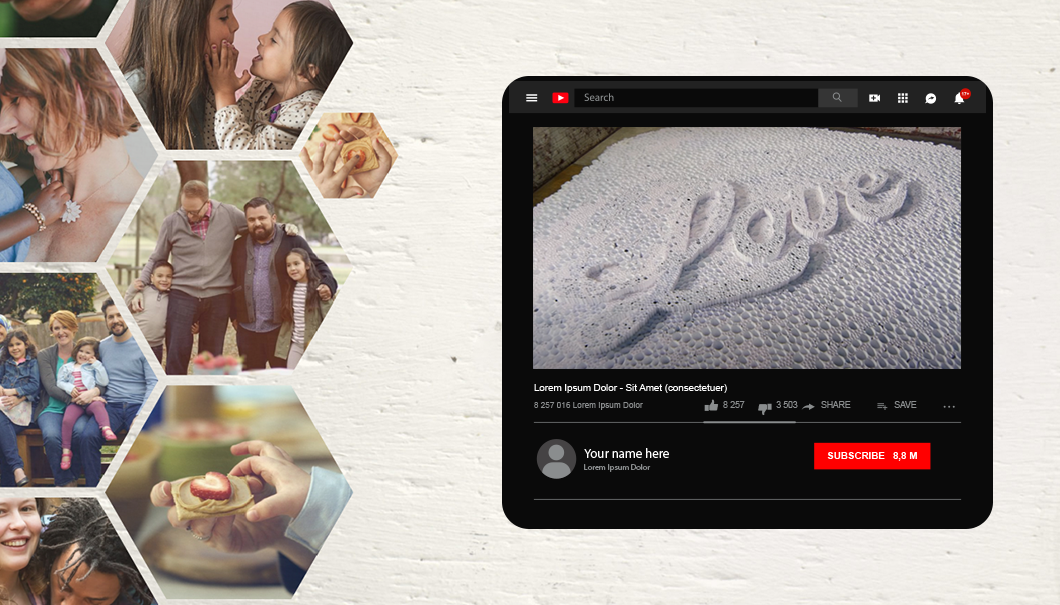
Honey Maid recognized a chance to engage with its consumers while highlighting its long history and commitment to inclusivity by honoring the variety of the contemporary family.
Over 8 million people had seen the 30-second ad on YouTube. According to YouTube statistics, Honey Maid was able to determine that 97% of the ad’s video views came from those aged 25 to 54 using age and gender targeting. Women help the majority in viewership as they account for 98% of the total.
However, there was an obstacle that arose during the campaign. The message of the campaign did not resonate with everyone which led to negative tweets and comments.
Honey Maid saw it as an opportunity to tap into the audience’s mind and capitalize on it. They created a clever response to the negativity. They made a video ad, where two artists utilized printouts of all the critical comments to form the word “LOVE”.
It was straightforward and effective, giving Honey Maid another opportunity to demonstrate its dedication to the causes of diversity and equality as well as its support for the LGBTQ community.
More than 4 million people viewed “Love.” According to YouTube data, the first 90 days of views were equally split between males and women, and over a quarter of viewers were millennials under the age of 24.
What are the Key Takeaways?
Both campaigns significantly benefited the brand by building strong brand awareness. But another key takeaway that advertisers had was the importance of a message to resonate with the audience. Engaging the audience emotionally is a simple yet strong way to make a place in people’s hearts.
How to Make the Most from Pride Advertising In 2024?

The advertising landscape has transformed a lot. A privacy-focused future has made Apple and Firefox take the revolutionary step by banning the use of third-party cookies whereas Google is planning a strategic phase-out while working on alternatives.
So, how can brands make the most during the pride month?
Contextual Advertising is one of the ways to capitalize on the opportunity. Mirrors is a revolutionary AI-powered technology offered by Silverpush that ensures advanced brand safety.
The high-powered AI technology ensures that the message reaches the right audience at the right time. Mirrors identify key contexts of the blog by analysing content and classify into segments.
This year, advertisers can make the most of Pride Month by relying on omnichannel contextual advertising as Mirrors can function across multiple channels.
1. YouTube
Video ads are widely acceptable, and they accounted for 82% of global internet traffic in 2022. The context detectors help Mirrors find the relevant ads. This increases the possibility of users engaging with the brands as they are relevant to the user when they are highly intrigued.
2. Open Web
Based on the content of the webpage consumed by the target audience, AI-based technology can place relevant ads.
3. Meta
Mirrors carefully chooses and analyzes brand-safe Facebook pages to extract contextual signals that enable the distribution of real-time, in-the-moment advertising with remarkable performance. This is done with the help of Artificial Intelligence (AI), Machine Learning (ML), and Natural Language Processing (NLP) models.
4. CTV
Pride ads are displayed in appropriate surroundings using semantic analysis, content analysis, and customized ad segments to prevent inappropriate placement depending on user emotions and behavior. Facebook is the best place for people with varied interests.
Conclusion
Advertising for Pride is more than simply recognizing and appreciating the LGBTQ community. It is the opportunity for brands to communicate their truth and take a position. According to a study, 45% of consumers under 34 years old say they’re more likely to do repeat business with an LGBTQ-friendly company. It is time for brands to take this opportunity to attract their desired audience contextually.
Cricket and Advertising: Winning Strategies for the 2023 World Cup
PUBLISH DATE: 12 May 2023
Cricket is Life. Everything else is just a game.
With 2.5 billion estimated followers, cricket is the second most popular sport around the world. The upcoming 2023, ICC Men’s Cricket World Cup has already generated excitement among fans.
The ICC Men’s Cricket World Cup isn’t a tournament that viewers enjoy; rather, it is a festival for brands to establish a rock-solid awareness. Brands have a cut-throat competition to grab the attention of the dedicated audience.
In 2019, 94% of the sports AdEx was from cricket, highlighting the popularity of the sport among advertisers. The online streaming of the matches brought a new advertising field when the World Cup was first streamed on an OTT platform in 2015. Indian advertisers alone were expected to spend more than 400 million, and Star India expected TV and internet revenues to be around Rs 2,100 crores. Along with e-commerce, gaming, soft aerated drinks category, cellular phones, wires & cables, and perfumes & deodorants were some popular categories that were on top of TV advertising. Brands paid 20 lakhs onwards for 10-second ad spots, and the sponsorship package was for 40 crores onwards.
How Brands Can Capitalize 2023 Cricket World Cup Opportunity?
The 13th 50-over ICC Men’s Cricket World Cup will take place in 2023, with India serving as the host nation. The quadrennial tournament is scheduled to take place in 2023, with India serving as the host nation for a record-breaking fourth time.
The format of the tournament will be round-robin before the knockout rounds, like the 2019 competition in England and Wales.
World Cup is the best time to tap into the audience’s mind and create a brand’s presence. Advertisers can use omnichannel advertising strategies to engage with the audience across all platforms and channels during the World Cup.
Some ways to capitalize are:
Traditional Methods Include
1. Sponsorship – Brands can become official sponsors of the tournament. A recurring brand recall can be easily created as brands will be promoted alongside the event branding.
2. Television Advertising – There is a drop in this field of advertising but millions of people are still glued to tv screens when there is a match, especially in remote areas. By creating strong tv ads brands can have the ever-lasting memory for the audience.
The “Mauka Mauka” ad campaign created a huge brand recall in 2015 and 2019 irrespective of the results. The notable point is when the first advertisement appeared on YouTube in 2015. it received more than a million organic views in the first 12 hours of being live.
Digital Methods Include
1. Video Advertising: People eagerly wait to grab any information during a cricket match. From watching a live cricket match on the OTT platform to watching highlights on YouTube, videos get the center of attention. Advertisers can leverage this attention by using different ad formats available on YouTube.
2. Social Media Advertising: During cricket tournaments, social media platforms, Instagram, Facebook, Twitter, and LinkedIn are flooded with updates. These platforms offer various advertising opportunities which an advertiser can utilize to benefit themselves. Based on the demographics, advertisers can target specific audiences.
3. CTV Advertising: A huge set of audience is shifting from traditional TV streaming to connected devices. This is an advantage for advertisers as CTV allows granular targeting. This means with the right message, advertisers can reach their target audience exactly where they are.
Another interesting advertising element present for the 2023 World Cup is contextual targeting. In 2019, the news of the phase-out of third-party cookies was spread. This led advertisers to look for an alternative. But during 2019, contextual advertising was not in the picture. However, with time this form of advertising proved to be a beneficial alternative. Combining the power of contextual advertising and the World Cup together can bring outstanding results.
Mirrors is a flagship product of Silverpush which is helping brands reach their target audience on different channels in the most contextual way possible.
How Brands Can Leverage the AI-Powered Technology, Mirrors?
Studies have proven that 63% of users prefer relevant ads and it makes them engage with the brand. This also results in higher ROIs and ROAS.
With contextual advertising, advertisers can easily engage the audience on each platform without interrupting their viewing experience.
Mirrors for YouTube
People are glued to the screen when it’s time for the World Cup. Men’s CWC 2019 live coverage crossed a cumulative average audience of 1.6 billion viewers on a global scale. The average watched time per unique viewer was 42% higher than in 2015. This leaves advertisers with the hope that it will be much higher for 2023.
To leverage the attention of the large audience of human-augmented technology, Mirrors is trained to place ads in the most relevant manner. With the help of the AI will recognize the triggers and will place the most suitable ad that aligns with the content consumed by the user.
Mirrors for Facebook
Mirrors similarly work for Facebook. But while extracting insights based on visual triggers it also dives into the context of the text.
Keyword-based targeting reduces the reach of a campaign by blocking the content based on keywords, contextual targeting understands the context of the word being used. This enhances brand safety as well as increases the ad placement opportunity.
Final Words
The World Cup is a complete package for advertisers to promote. Brands have a fantastic chance to expand their awareness and connect with a global audience during the World Cup. With the popularity of cricket at an all-time high, advertisers must take advantage of this trend and develop effective marketing campaigns that connect with their target market.
We can claim that brands could expect improved ROIs and reach during the 2023 ICC Men’s Cricket World Cup by harnessing the power of contextual advertising.
Silverpush’s Contextual Approach to Sustainable Digital Advertising
PUBLISH DATE: 08 May 2023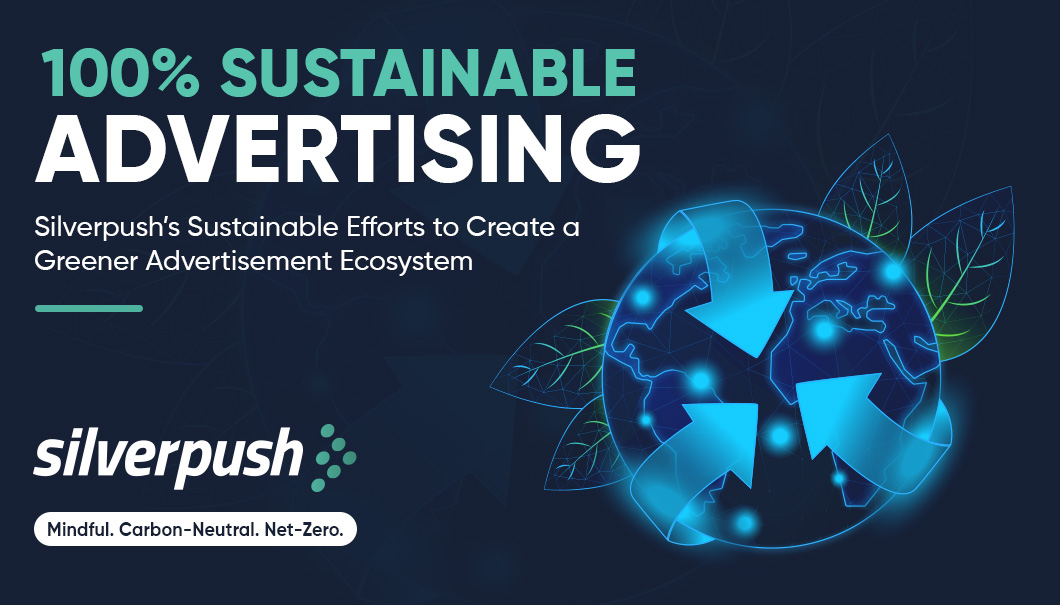
The aviation industry has been labeled as a notorious contributor to greenhouse gas emissions, however, the online advertising industry is no less.
Digital initiatives account for 3.5% of global GHG emissions, surpassing the aviation industry’s 2.5% share, according to the French think tank The Shift Project.
The digital ecosystem now makes up the fastest-growing source of GHG emissions, recording a 6% annual increase each year for the last five years.
The advertising industry requires a new roadmap to connect businesses with customers in the most effective way with the least possible impact on the environment. Advertising contextually can help!
Silverpush, an AI-powered contextual advertising firm, is on a mission to make digital advertising sustainable. We are continuously looking for ways to decarbonize our digital presence by monitoring our carbon consumption in real time.
This blog post will explore the urgent need to pull the emergency brake and prioritize cutting advertising emissions and how at Silverpush, we reduced 2333 tons of CO2 emissions in the past 5 years by advertising contextually.
Key Statistics
- A mock digital advertising campaign produced 323 tons of CO2eq emissions, equivalent to the annual carbon footprint of 16 Americans.
- As per CLICKON, in 2021, nearly 32% of UK brands expressed their goal to achieve carbon neutrality by the end of 2023.
- The internet is responsible for almost 4% of global greenhouse gas emissions, equivalent to 1.6 billion metric tons, while the aviation industry accounts for nearly 5%.
How Digital Advertising is Impacting the Environment?
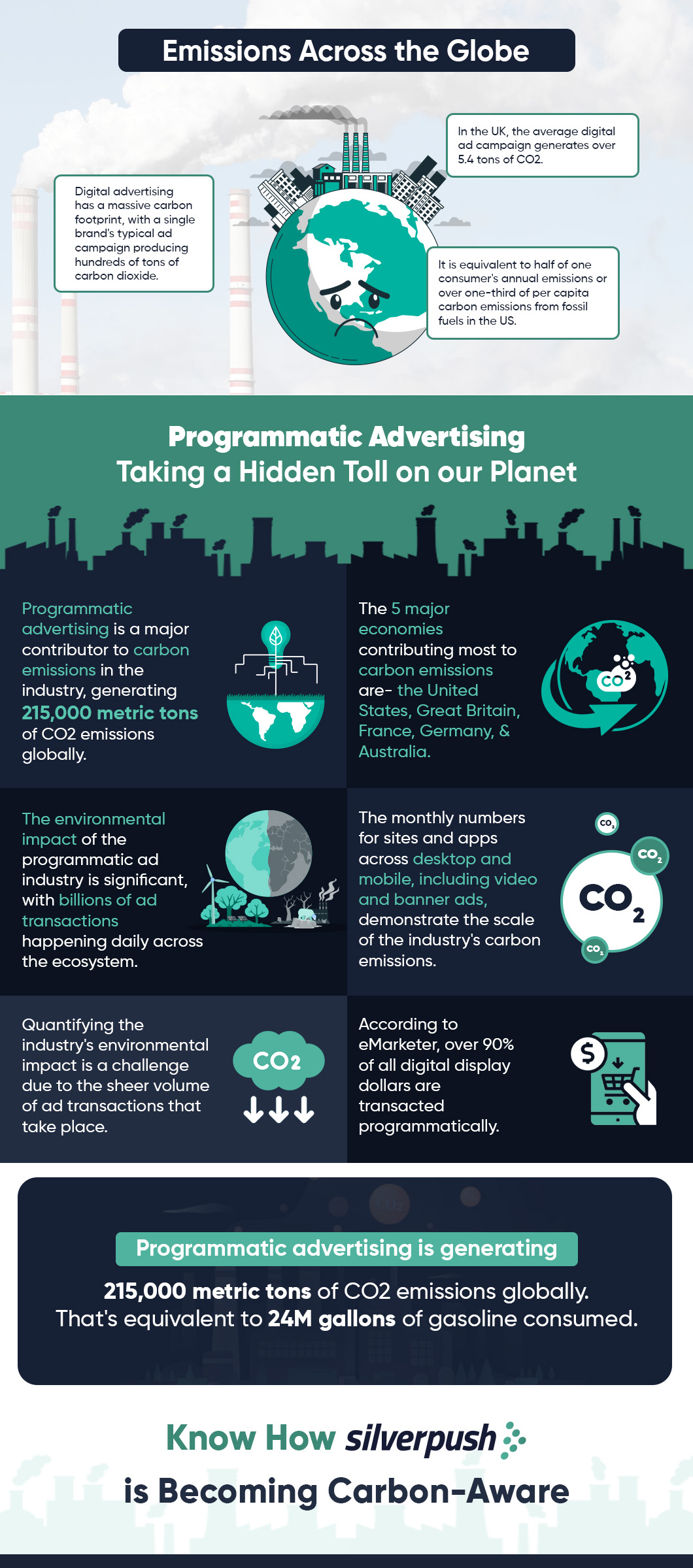
Reducing Carbon Footprint in the Advertisement Industry
The programmatic supply chain is a complex ecosystem with various components, each contributing to carbon emissions in different ways.
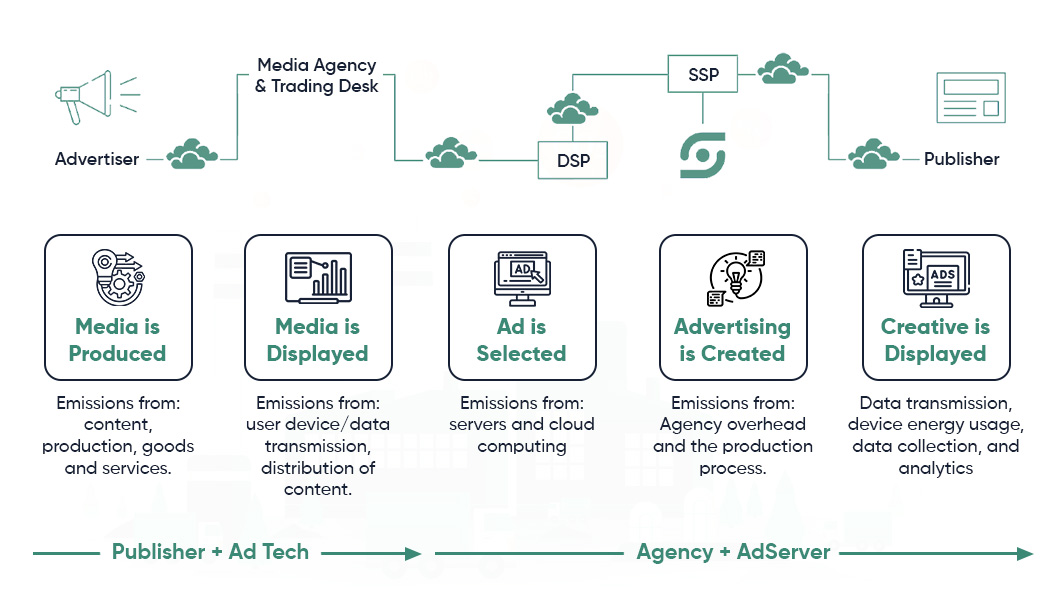
1. Demand Side Platforms (DSP): These enable advertisers to automatically purchase digital ad space from media publishers on an exchange.
2. Supply Side Platforms (SSP): Used by publishers to manage their inventory of available ad space.
3. Data Management Platform (DMP): It is a centralized data warehouse that collects and analyzes data from various sources to ensure that ads are targeted to the right audience. Ad Exchanges are where traders meet to negotiate the price of ad space.
4. Ad Exchanges: A virtual marketplace where buyers and sellers of digital ad space come together to negotiate prices and transact.
However, every aspect of this ecosystem requires servers and devices to operate, generating heat and carbon emissions that contribute to the Scope 3 emissions of brands and advertisers. Scope 3 emissions are those that result from activities outside of a company’s direct control but still impact its value chain. Even unsuccessful bids for ads that are not delivered contribute to the carbon footprint through media storage, computing power, and network traffic.
Also read: Silverpush’s Cookieless AI Solutions: Saving 1000 Tons of CO2eq in Advertising Campaigns
Strategies to Reduce Carbon Emissions in the Advertisement Industry

Here are some strategies that can be implemented to reduce the carbon footprint of a digital ad campaign:
1. Use Lightweight Files: DSPs, SSPs, and ad servers consume a significant amount of energy to process files for ad campaigns. To reduce energy usage and carbon emissions, advertisers can use lighter files.
2. Involve Vendors: Advertisers can collaborate with their vendors to adopt sustainable practices like using renewable energy-powered servers, file compression, and offsetting carbon emissions.
3. Timing of Ad Campaigns: Advertisers can schedule ad campaigns during off-peak hours when electricity is generated from sustainable sources, such as solar energy.
4. Green Agencies: Advertisers can partner with agencies that prioritize environmental protection and take measures to reduce their carbon footprint.
5. Green Platforms: By adopting green AdTech platforms and optimizing demand-path and supply-path, advertisers, agencies, and publishers can minimize carbon emissions.
6. Limit ad density: Publishers can adopt stricter ad policies to ensure that only higher-yielding ads run on their pages, reducing the overall number of ads and consequently, energy consumption.
7. Optimize AdTech platform performance: AdTech vendors can optimize their infrastructure setup, resulting in cost savings and reduced energy usage and carbon emissions.
8. Moving Towards Contextual Advertising: Contextual solutions significantly reduce multiple grams of carbon footprint and energy consumption every second due to their ability to target without the use of cookies and relevant audience targeting.
Silverpush’s Sustainability Efforts in Digital Advertising with Contextual Targeting
Storing and processing large amounts of data can have a significant impact on carbon emissions.
The generation of carbon dioxide (CO2) is often associated with the energy consumption required for data centers and servers to operate. Therefore, it is essential to consider the environmental impact of activities such as syncing cookies, audience data collection, and retargeting users, which all involve significant computation and data storage.
Therefore, the more data that is stored and processed, the greater the carbon footprint. To reduce their environmental impact, organizations should minimize unnecessary data collection and processing by carefully considering their data storage and processing practices.
How Silverpush is Becoming Carbon-Aware?

- Silverpush’s contextual advertising approach involves collecting data from third parties and integrating it into campaigns.
- To minimize their environmental impact, we have implemented a real-time monitoring system to optimize carbon consumption.
- By analyzing metrics of carbon consumption, they can identify which creative is consuming more emissions and make necessary adjustments.
- One major advantage of Silverpush’s contextual solutions is it is completely cookieless, and does not require large amounts of data storage to display relevant ads to their target audience.
- The AdTech pipeline is a complex system that involves multiple components, including data storage, processing, and delivery, which all contribute to carbon emissions. Additionally, serving advertisements often requires multiple middleware services.
- Similarly, some publishers have complex technical requirements to deliver their content, which can result in a significant amount of carbon emissions.
Way Forward
The digital advertising industry has a significant impact on the environment, contributing to global greenhouse gas emissions. As a responsible advertising firm, Silverpush recognizes the urgency of cutting down advertising emissions and has taken a strong stance toward promoting sustainability. By adopting contextual advertising and real-time carbon monitoring, Silverpush has successfully reduced its carbon footprint, making advertising more sustainable. Join us to build a better, greener world for everyone.
Play Safely: Strategies for Brand Safety in In-Game Advertising
PUBLISH DATE: 30 April 2023
Video games have always engaged a large audience, especially GenZ, and millennials. This gives advertisers and brands an opportunity to innovatively establish a solid brand recall.
As gaming devices continue to gain popularity and offer more opportunities for brands to reach their audience, the global gaming market is predicted to grow at a CAGR of 9.9% from 229.39 billion in 2022 to 252.10 billion in 2023. Additionally, it’s projected to reach 401.32 billion by 2027 at a CAGR of 12.3%.
The gaming industry is in an evolving phase and advertisers must explore this in-video game advertising. The primary reasons are:
- The gaming industry has a huge audience base who play games on different devices. This means brands have more than one opportunity to reach their targeted audience.
- With a large audience reach, the gaming industry has a loyal fan base. According to a study, in-gaming advertisements had influenced 44% of gamers to engage with brands.
However, this pool of advertising opportunities will require brands to focus more on brand safety.
What are the Key Components of Brand Safety for In-Video Gaming Advertising?
Measures taken to protect the brand image are known as brand safety. This is done to protect brands from irreparable damage as we had a few examples in the past of how the brand’s reputation was damaged beyond repair due to ad placement next to inappropriate content.
Interactive Advertising Bureau (IAB) has shared an impactful framework for advertisers which can help them in ensuring brand safety.
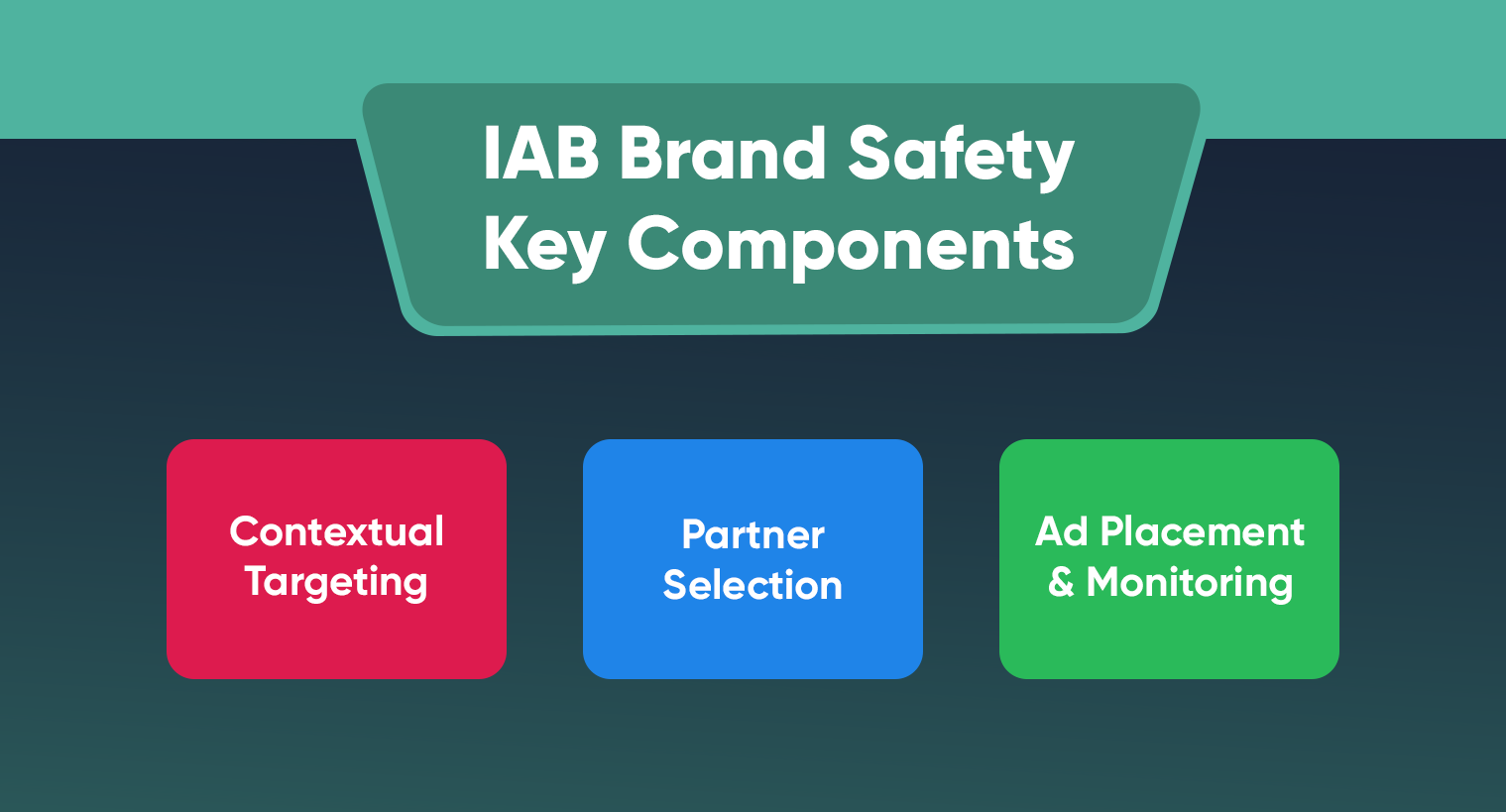
1. Contextual Targeting:
The process to phase out third-party cookies was started years ago. This was done to abide by the privacy of the user. Amidst the evolving landscape of advertising, advertisers began to rely on contextual targeting which resulted in higher brand engagement. In-video gaming advertising, advertisers must rely on contextual advertising to be profitable as the AI-powered technology ensures that the ads appear to the relevant content. A customized blocklist is prepared but unlike keyword-based targeting, the AI understands the context of the keywords used like a human mind. This increases the advertising opportunity, brand safety, and audience engagement with the brand.
2. Partner Selection:
Brands look for partners who would help them in setting up the ads in the video games. But before finalizing the partners, brands must evaluate them based on their game quality, advertising ecosystem, and compliance with General Data Protection Regulation(GDPR) and Children’s Online Privacy Protection Act (COPPA) regulations. It’s also essential to review the game’s content for any violent or inappropriate content that doesn’t align with the brand’s values. Advertisers should request a comprehensive explanation of the partner’s brand safety policies and a block list of prohibited advertisers or services.
To enhance your brand safety, you perform the following steps to ensure multi-level verification. Use a combination of the following verification tools:
- Viewability – This will help you get the percentage of ads seen by your audience. This tool ensures that your ad is seen by the target audience.
- Fraud detection-This tool will help you in identifying and preventing fraud. It will detect invalid traffic, bots, and any fraudulent activity which has the ability to impact your campaigns.
- Brand Safety Protection- This tool will add an additional layer of protection for contextual targeting. The tool will ensure that your ads aren’t displayed against inappropriate content.
- Audience Verification- This tool will give you insights into the audience who have seen your ad.
3. Ad Placement and Monitoring:
A key component of brand safety in video game advertising is ad placement. To prevent any unfavorable connotations with the brand, advertisers should make sure that their adverts are positioned in the proper areas inside the gaming environment.
For instance, advertisements for gambling or alcohol shouldn’t be included in kid-targeted games since they might expose kids to unsuitable content and harm the reputation of the company.
In a similar vein, advertisements for graphic or explicit content need to be kept out of games targeted only at adults. To make sure that their advertising is neither obtrusive nor disruptive, advertisers should also take the context of the gaming environment and the entire user experience into account.
Apart from the placement advertisers should keep a close eye on their campaigns to ensure they are not running in inappropriate places. Utilizing technology solutions and collaborating with partners to resolve any problems that may occur be part of this. For instance, advertisers may check ad placement and look for any possible brand safety issues using third-party technologies. They may also closely collaborate with their partners to resolve any problems and make any necessary modifications. In order to track success and pinpoint any areas for improvement, advertisers should also set up clear reporting tools. Advertisers that regularly report on their campaigns can better spot potential problems and take proactive steps to solve them before they become a problem.
Conclusion
The gaming industry is on the rise and in the coming years gamers will be a prominent and much larger community. Advertisers must explore this evolving landscape of advertising while they focus on brand safety.



